Modified mounting glue forms a compound, without inferior to fixing with nails or screws. And the situations where the materials and elements of the decor can only be glued, are constantly found.
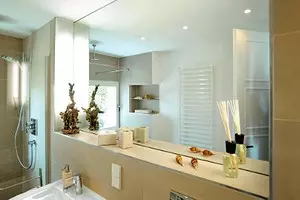
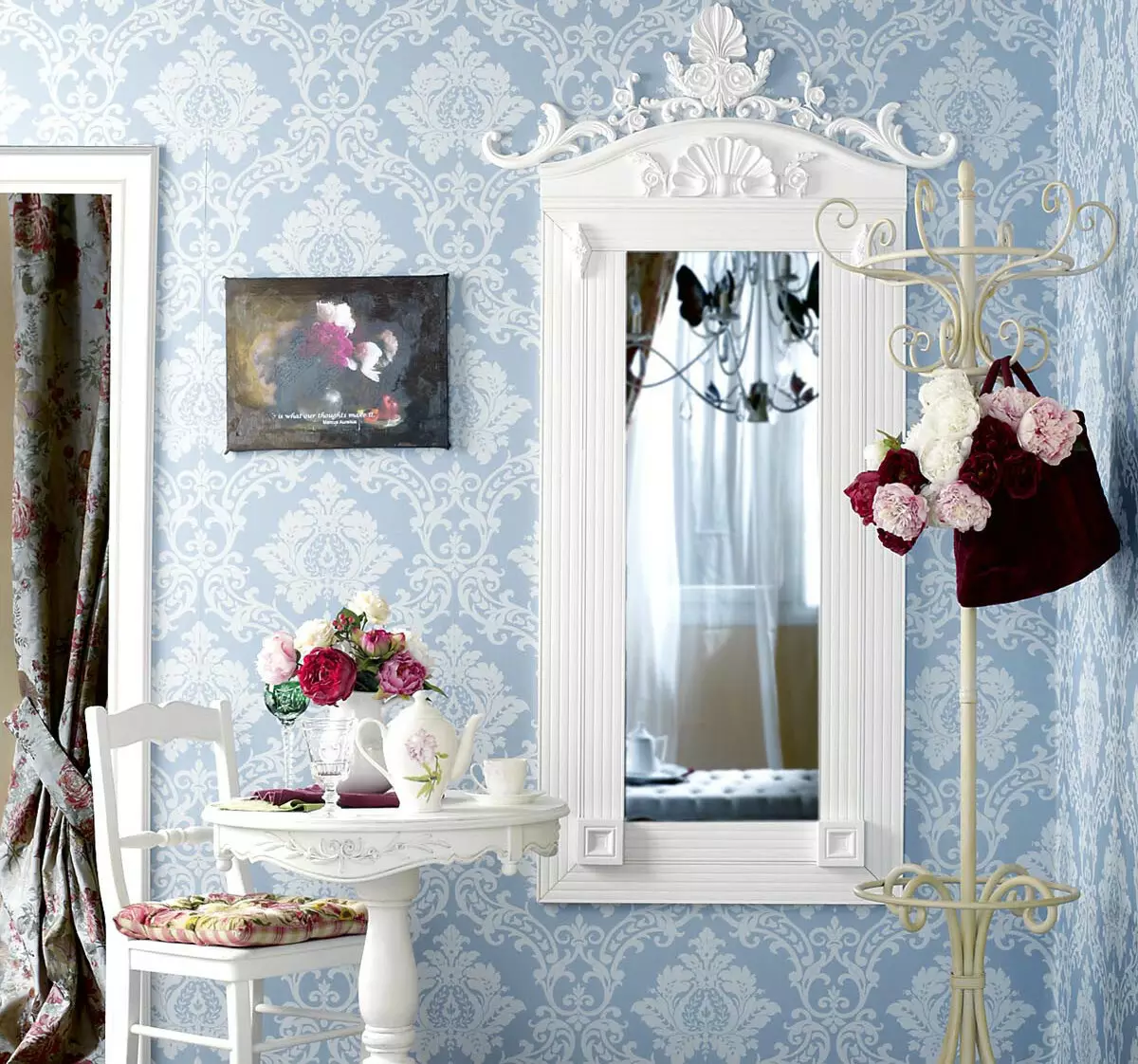
Photo: "Europlast"
Mounting adhesives of domestic use are used to fix decorative products, plinths, eaves, window sills, wall panels, mounted structures from wood, glass, metal and other materials. The release form is small tubes (80 ml) for extruding manually or special tubes (290-310 ml), which are placed in a construction plunger gun. The first is used with a small, point repairs. The second is indispensable in the finishing works of the best volumes and allow you to quickly and evenly apply the required amount of glue to the surface.
The name "Liquid nails" definitely indicates the wonderful properties of the compositions of this type. With their appearance disappeared the need for a time-consuming process of drilling concrete, brick and other bases, often to solve the combination of fasteners with holes / devices on the products installed or the subsequent decoration of the heads of nails and screws. However, it is possible to guarantee the quality and reliability of the adhesive compound only when the glue is properly selected in accordance with the materials, the preparation of their surface and performing the installation sequence.
In the domestic market there are many mounting glue of different types. Specialized shops, focusing on frequently asked customer issues, offer a simple and understandable classification:
- solvent-based adhesives;
- water-based adhesives;
- Special mounting adhesives;
- Chemical anchors;
- Adhesives sealants.
Let us dwell on the first three types.
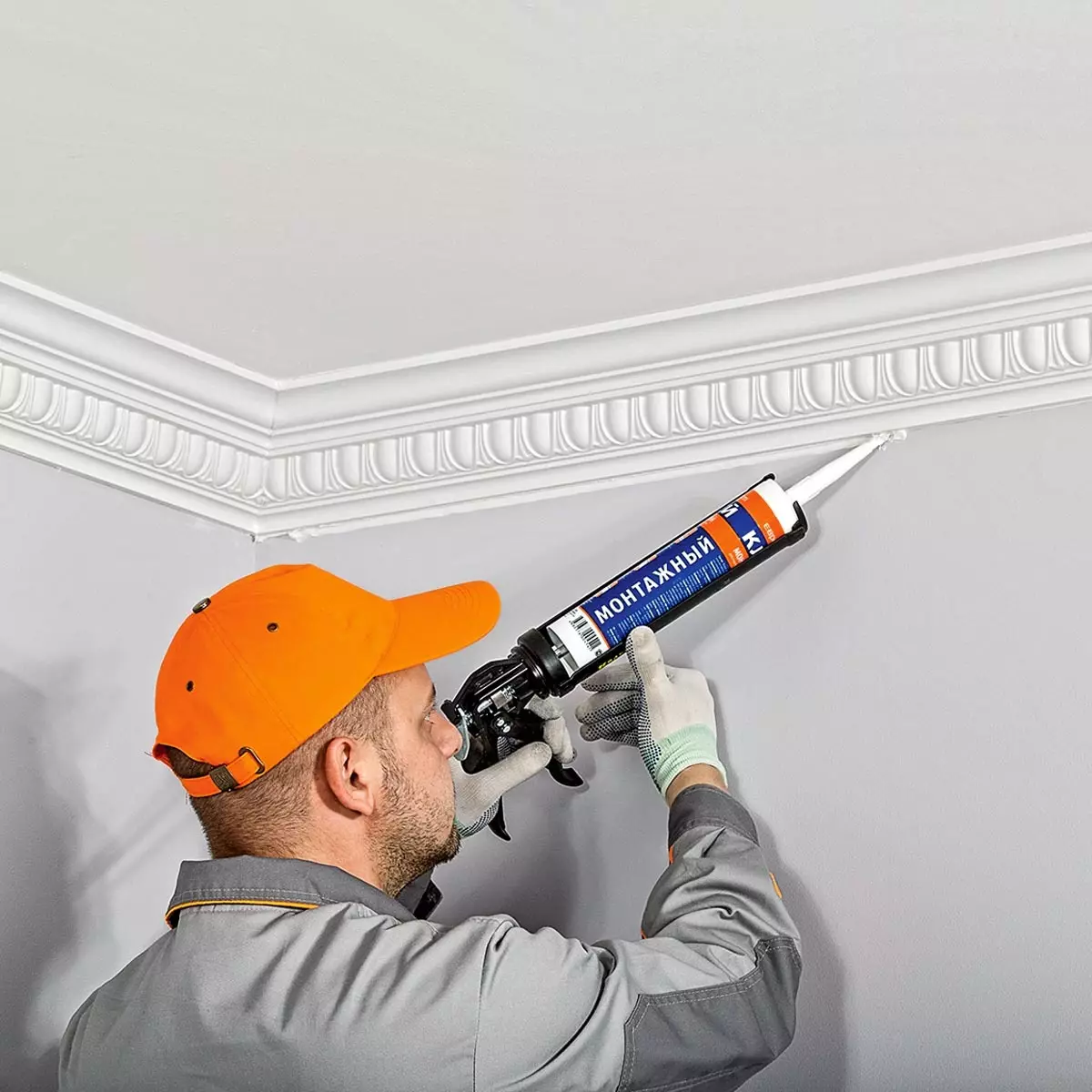
Special adhesives are used for fastening the decor from polyurethane, among them "Mounted" and "Universal" ("EuroPlast"), made taking into account the high inertness of polyurethane foam. Photo: "Europlast"
Solvent-based adhesives
This group includes rubber and non-neoprene (neoprene - synthetic elastomer, according to its properties comparable with natural rubber) adhesives in organic solvents. Their main advantage is the ability to easily and quickly, in just 3-5 minutes, a maximum of 10 minutes, fix on the vertical plane of the product of a rather impressive mass: 3-5 kg. Such adhesives are resistant to temperature and humidity drops, and apply them both inside the house and outside. They are well withstanding dynamic loads (blows, vibrations, shaking) and are suitable for connecting various materials: wood, wood plastics, ceramics, bricks, products from metals or PVC. The only mandatory condition is the presence of at least one absorbent base. The fact is that adhesives of this type are cured by the care of the solvent (by evaporation and absorb the porous surface). When working with them, the contact installation method is used.The composition is applied to the surface of the product by points or stripes, along large areas are distributed by a spatula. Then the product is applied to the place of fixation and pressed with force. After that, the glued surfaces are disconnected and withstand a few minutes (instead of the words "exposure time to the connection", you can find the term "gumming"). During this time, the solvent evaporates, and the glue becomes sticky. After secondary fixation (also with force, and if necessary, with fixation of the glued elements, it is formed a durable adhesive layer, holding heavy elements without climbing. If both surfaces are inevitable, it will not be possible to get a high-quality connection.
Please note: glue on an organic solvent has a sharp, unpleasant smell. Some compositions include aromatic solvents (for example, toluene, benzene, xylene), poor in terms of ecology and limiting application scope (not suitable for foam). By the way, professional finishes working with adhesions of this type constantly put on special protective masks with filters (since ordinary respirators do not help). At once use and after curing, such adhesives do not pose a threat to health. Another peculiar limiter to use glue on solvents is a beige mass color, while the set of white decor elements, and transparent glue is preferable for glass parts, and these are found in our market.
Mounting glue on solvent *
| Mark. | "48 A" | "Moment installation Extra MR 55 " | "Universal" | "Mastifiks" | TYTAN MULTI-USE SBS 100 | "Superproken Montage Kit Professional » |
|---|---|---|---|---|---|---|
Manufacturer | Soudal | Henkel | "Europlast" | Quelyd. | Selena | Bison. |
Operating temperature range, ° C | -20 ... + 60 | -40 ... + 70 | From -10. | -20 ... + 100 | 20 ... + 60 | -20 ... + 100 |
Open time, min | five | fifteen | At least 10. | — | 10-15 | — |
Time of complete curing, h | 24-48 | 24. | 24. | 48-72 | 48. | 48. |
Storage time, month | 12 | eighteen | 24. | 24. | 12 | 24. |
Packaging | 300 ml | 423 g | 290 ml | 300 ml | 290 ml | 350 g |
price, rub. | 188. | 191. | 550. | 183. | 157. | 284. |
* Data from sheets of technical information manufacturers.
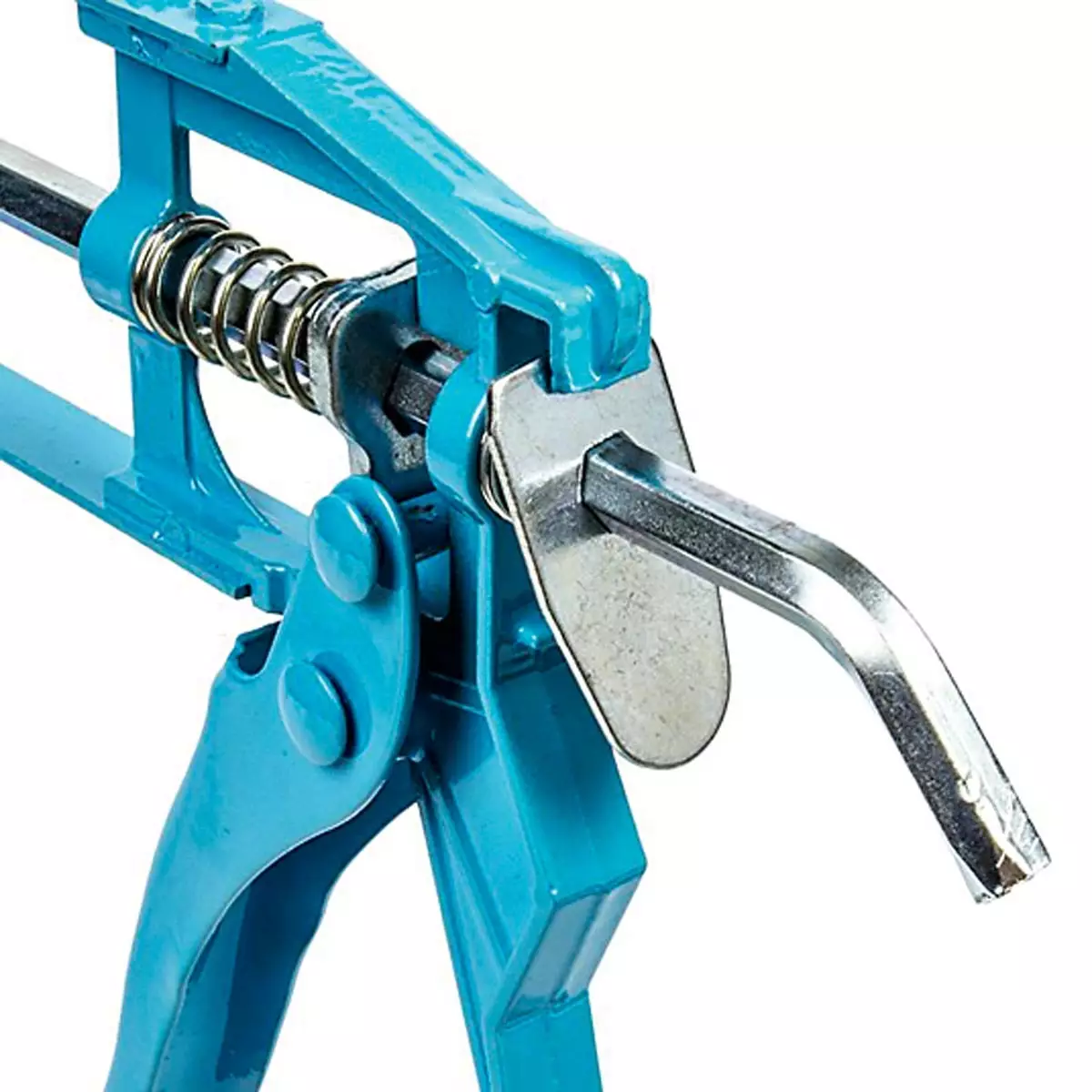
For convenient dosage applying glue on the surfaces, construction (assembly) pistols are designed. The adhesive composition comes out of the tube when pressing on the "trigger". Photo: Leroy Merlin
Water-based adhesives
The main advantages of water-based mounting glue - environmental friendliness, non-combustibility and wider color gamut. Among the fixed materials are foam and PVC, wood and its derivatives, ceramics, concrete, brick, plaster, plasterboard. Nevertheless, the scope of the application of these compositions is narrower than on a solvent. It is not recommended to glue their metals due to the risk of corrosion and due to the lack of diffusion, insufficient connection strength. Note the low elasticity of these products, for regions with dynamic loads, they are usually unsuitable. Some formulations have moisture resistance restrictions, and they are not used outside the premises.Most of the aqueous adhesives have a longer time of setting - up to 20-30 minutes (the exclusion - compositions with a super-fast initial setting of up to 5 minutes), and the fixation of heavy products (weighing more than 0.5 kg) is impossible for vertical surfaces without fixing elements. However, it does not prevent them from successfully cope with many diverse decorative tasks when interior design.
Mounting water-based glue *
Mark. | "Acrylic CB-10 mounting glue | "Tytan Decor Express" | "Mounting" | 50 a Montage Fix | "Moment installation Express Decor MB-45 » | Belfix Adhesive Bt. |
|---|---|---|---|---|---|---|
Manufacturer | Henkel | Selena | "Europlast" | Soudal | Henkel | Belinka. |
Structure | Water dispersion of polymers | Acrylic dispersion | Dispersion of acrylic copolymers | Acrylic dispersion | Polyacrylate - Water dispersion | Acrylate dispersion |
Range workers Temperatures, ° C | -20 ... + 70 | -20 ... + 60 | From +8. | -20 ... + 70 | -20 ... + 70 | -20 ... + 70 |
Open time, min | Up to 20. | 10-15 | Not less than 8. | fifteen | fifteen | — |
Time of complete curing, h | 48. | 48. | 24. | 24-48 | 48. | 24. |
Storage time, month | eighteen | 12 | 12 | 12 | eighteen | 24. |
Packaging | 400 g | 310 ml | 290 ml | 310 ml | 400 g | 300 ml |
price, rub. | 198. | 174. | 363. | 175. | 170. | 150. |
* Data from sheets of technical information manufacturers.
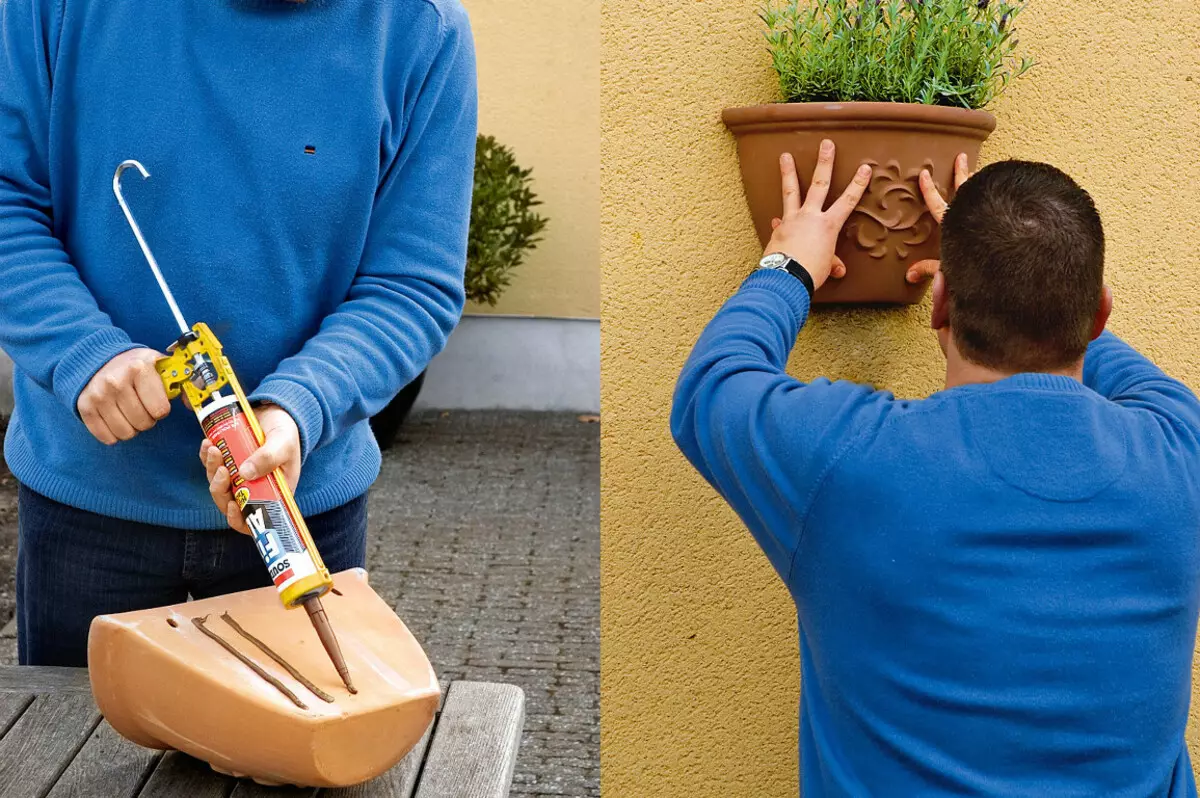
To attach ceramic porridge to the wall, glue is applied on its back side, squeezing with strips with a width of 5-7 mm through regular intervals, after which the vase is pressed against the wall. Photo: Soudal
Chemical anchors
Many are confronted with difficulties in the installation of massive objects, such as air conditioners, kitchen cabinets and shelves, brackets of various purposes, plumbing equipment, boxing pears, satellite plates, marquises, railing, gates, wickets, etc. The optimal fastener for them is chemical anchors. This is called a system consisting of glue on the basis of two-component synthetic resins and other organic polymers with a metal fastener element. It is used to fix heavy structures in solid bases from concrete, natural and artificial stone, as well as in the hollow bricks, aerated concrete blocks and their like, where, due to the low strength of the material, mechanical fasteners in most cases are unreliable.
The order of working with the chemical anchor is simple. A hole is drilled in the wall, clean it from the construction dust, squeezed inside the glue and insert the fastener element. The adhesive mass fills all empties, penetrates the pores of the base and hardens for 5 hours, forming a solid, monolithic compound. By the way, until the mass finally thickened, the position of the metal rod can be corrected, which does not allow the usual pad anchor.
Compared to mechanical anchors, chemicals have higher hitch indicators. The average life of their service is about half a century! At the same time, the attachment point can be located near the edge of the wall structure, and remove the metal element fixed in this way is possible only with a piece of wall.
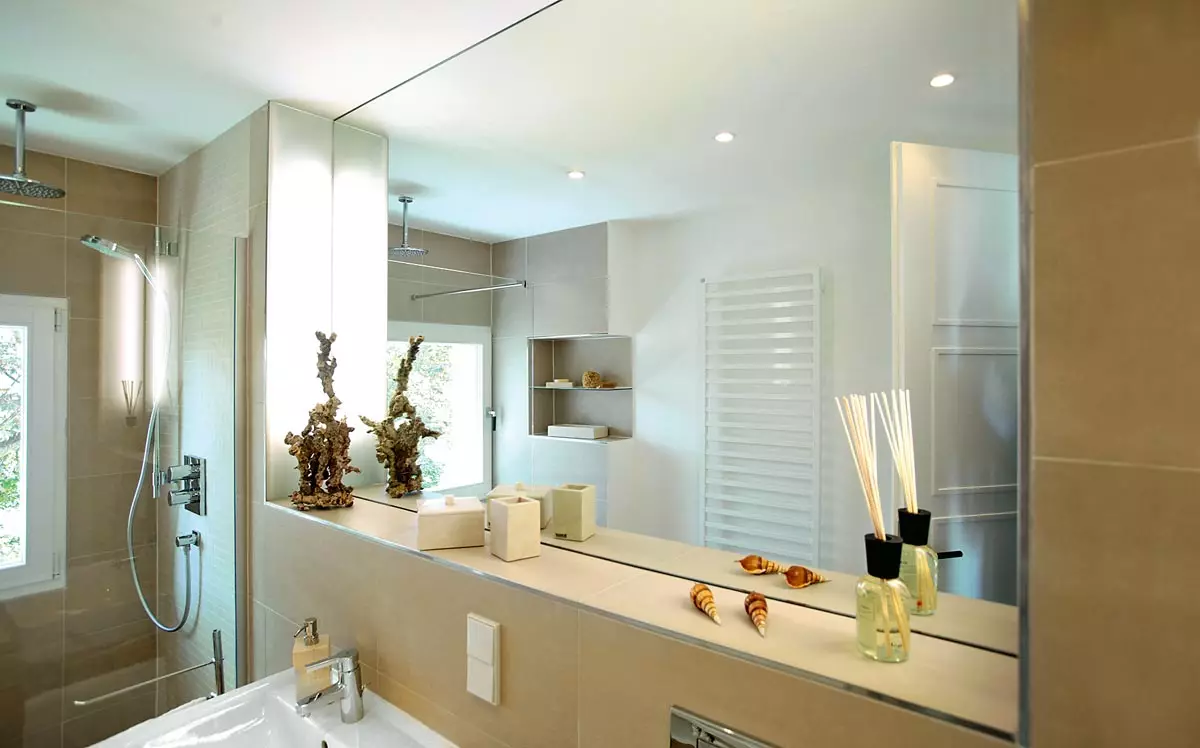
Installing large and heavy mirror canvases alone are unsafe, it is better to do it together, having thought out the supporting structure in advance. Ceiling mirrors require a mechanical support system for the time of glue. Photo: Jörg Lantelme / Fotolia.com
How to check the quality of glue
A simple way to check the quality of the selected glue and its adhesion to the materials is to carry out an experiment, for example, glue a small tree bar to plywood. First, it is worth paying attention to how the adhesive composition wets the surface. If bad, then the clutch with it will be weak, and the quality of the adhesive connection is unsatisfactory. If well, then you need to wait 1-2 days, then tear the bar and evaluate the nature of the separation. From glue, which will easily break through the seam, leaving the adhesive mass and on the plywood, and on a wooden cry, it is not worth waiting for anything good. Its cohesion (internal strength of the adhesive layer) is weak. High-quality mounting glue is balanced by adhesion and cohesion, and the gap occurs according to the materials under study. In the case of wood, its fibers will be broken.

